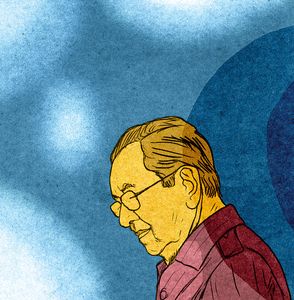I first saw Malaysia’s Mahathir Mohamad during a Group of 15 summit in 1994, at a dinner hosted by prime minister P.V. Narasimha Rao, at Hyderabad House, New Delhi. Mahathir was a sprightly 68, compared with his 73-year-old host. He was known to be rough on India, some say because of his paternal roots that run to Kerala. This necessitated him to be assertive of his maternal Malay identity. His return to power defeating a hardcore Malay-origin leader should make him more relaxed about his identity.
At 92, Mahathir has returned to the centrestage of Malaysian public life, becoming the oldest head of government in the world. Mahathir’s decision to occupy the seat he vacated 15 years ago has raised that famous question again—the right age of retirement for politicians holding public office. It is a question that the CPI(M) and the voters of Kerala grappled with, in 2006, when the 83-year-old V.S. Achuthanandan insisted on heading the Left Democratic Front government in the state.
Ironically, what helped Achuthanandan remain in play was no different from what helped Mahathir regain relevance—the support of young voters. Young Asians love their grandparents, and when faced with the choice of supporting someone of their age or even their parents’ age against someone of their grandparents' age, they could well opt for the older leader. When the youth across Kerala supported Achuthanandan, to the extent of wearing T-shirts with 'VS' emblazoned across them, the party’s middle-aged leadership had to step back and allow the octogenarian to be the chief minister.
Young voters need not necessarily opt for young leaders. It was demonstrated in the 2014 Lok Sabha elections when many young Indians voted for the 64-year-old Narendra Modi, rather than the 44-year-old Rahul Gandhi. The young voters' rejection of 82-year-old Lal Krishna Advani in 2009 was not such an aberration, considering that they voted for another grandfather like figure, Manmohan Singh. Clearly, in Asian politics, age is no bar for holding public office.
That is why many eyebrows were raised when Manmohan Singh announced his decision to “pass the baton” at a news conference on January 3, 2014. By declaring his disinterest for a third term in the prime minister's office, Singh hit two birds with one stone. First, he indicated to Sonia Gandhi that Rahul could now take over the mantle. After all, Rahul and his supporters had been trying hard to unseat Singh since 2010. In 2012, they even came up with the idea that Singh should move to Rashtrapati Bhavan, allowing Rahul to move into 7, Race Course Road (now 7, Lok Kalyan Marg)—the official residence of the prime minister. But, Pranab Mukherjee played the spoiler.
The second consequence of Singh’s announcement was that, he had effectively removed himself from the electoral fray of 2014. The focus of the opposition's attack shifted naturally to the Congress president and her political heir.
Many people had the view that Singh would still remain relevant in a confused political scenario post-elections in 2014. The clear majority obtained by Modi killed that idea. But, Singh has not really retired from the political sphere. Every now and then he makes sure to hit the headlines. In 2019, he would be 87—five years younger than Mahathir. May be that thought had encouraged Rahul Gandhi to declare last week that he was now ready to be the prime minister.
Sanjaya Baru is an economist and a writer. He was adviser to prime minister Manmohan Singh.


